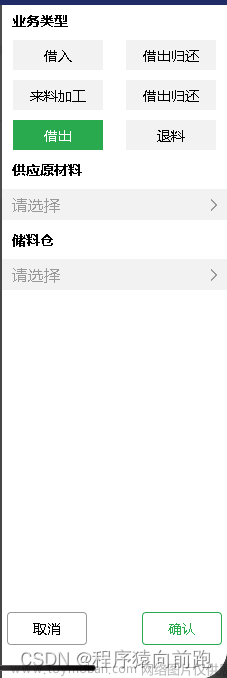1. 功能
在程序执行过程中,点击键盘p按键(pause), 程序暂停, 点击键盘上的n按键(next),程序继续执行
2. 代码
#include <iostream>
#include <stdio.h>
#include <unistd.h>
#include <stdlib.h>
#include <sys/ioctl.h>
char get_keyboard()
{
//fd_set 为long型数组
//其每个元素都能和打开的文件句柄建立联系
fd_set rfds;
struct timeval tv;
char c = '\0';
//将 rfds数组清零
FD_ZERO(&rfds);
//将rfds的第0位置为1,这样fd=1的文件描述符就添加到了rfds中
//最初 rfds为00000000,添加后变为10000000
FD_SET(0, &rfds);
tv.tv_sec = 0;
tv.tv_usec = 10; //设置等待超时时间
//检测键盘是否有输入
//由内核根据io状态修改rfds的内容,来判断执行了select的进程哪个句柄可读
if (select(1, &rfds, NULL, NULL, &tv) > 0)
{
c = getchar();
}
//没有数据返回'\0'
return c;
}
int main(int argc, char **argv)
{
int tmp = system("stty -icanon");
for (int i = 0; i < 10000; i++)
{
char control_char = get_keyboard();
std::cout << "control_char: " << control_char << std::endl;
if (control_char == 'p') // pause
{
sleep(1);
do
{
control_char = get_keyboard();
} while (!(control_char == 'n')); // next
}
// do-something
std::cout << "count: i = " << i << std::endl;
}
return 0;
}
可以使用opencv中相关函数简单实现: 空格键暂停, 其它任意键继续:
// ...
int key = cv::waitKey(100) & 0xff;
if (key == 32) //bland
{
cv::waitKey(0);
}
// ...参考: linux下实现键盘的无阻塞输入_fd_zero(&rfds);-CSDN博客
拓展: 每隔1秒,for 循环执行一次:文章来源:https://www.toymoban.com/news/detail-772861.html
char control_char = '\0';
char slow_char = '\0';
//for循环中:
{ control_char = get_keyboard();
// 不区分大小写
if (control_char >= 'A' && control_char <= 'Z')
control_char += 32;
// 按 l 或者 L, sleep 2秒, 按 n 或者 N, 恢复正常
if ((control_char == 'l')|| control_char == 'n')
{
slow_char = control_char;
if (slow_char == 'l')
b_slow = true;
else if (slow_char == 'n')
b_slow = false;
}
if (b_slow)
{
sleep(2);
std::cout << "sleep(2) second"<< std::endl;
}
// do sth ...
}参考: select() fd_set 原理介绍: 【一文搞懂】FD_SET的使用_欧恩意的博客-CSDN博客文章来源地址https://www.toymoban.com/news/detail-772861.html
到了这里,关于C++_linux下_非阻塞键盘控制_程序暂停和继续/for循环每隔2s执行一次的文章就介绍完了。如果您还想了解更多内容,请在右上角搜索TOY模板网以前的文章或继续浏览下面的相关文章,希望大家以后多多支持TOY模板网!





![【Linux】Shell脚本之流程控制语句 if判断、for循环、while循环、case循环判断 + 实战详解[⭐建议收藏!!⭐]](https://imgs.yssmx.com/Uploads/2024/02/649609-1.png)







